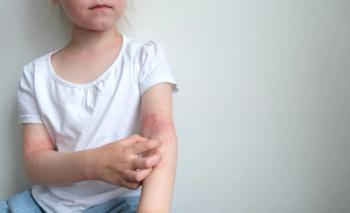
Teens With Hidradenitis Suppurativa Face Higher Risk of Chronic Health and Mental Health Conditions
In a national study of 55 million children and teens across the U.S., there were 1,240 confirmed cases of hidradenitis suppurativa (HS). Nearly all were aged 10 or older.
A recent study published in JAMA Dermatology found that teens with
(HS) are
HS is a chronic, painful skin condition that causes recurring bumps, abscesses and draining tunnels in areas like the armpits, groin and buttocks.
While typically diagnosed in adults, HS also affects children and teens—especially during and after puberty.
Adolescents with HS face unique challenges due to pain, odor and emotional stress, which can affect self-esteem, relationships and daily activities, the study shared.
Early symptoms are often mistaken for infections or acne, leading to delays in diagnosis of up to two years.
According to the HS Foundation, the condition is not contagious and has no link to hygiene, but it is associated with several chronic health conditions.
Between 34% and 93% of pediatric HS patients also have comorbidities such as obesity, high cholesterol and anxiety.
The connection between HS and other conditions, including diabetes or high blood pressure, is still unclear.
The overall occurrence of HS in young people is not well known, according to the study.
One national study examined health records from
The condition was almost four times more common in girls and highest among African American girls aged 15 to 17, at over 500 cases per 100,000.
To review the association between HS and relevant comorbidities in children 18 and younger and determine their overall pooled prevalence of comorbidities, researchers of the study examined observational studies published in three major databases: PubMed, Embase and Cochrane Central.
They included studies focused on children under 18 with a confirmed diagnosis of HS and its comorbidities. Case reports, reviews, and adult-only studies were excluded.
Two researchers independently reviewed and extracted data from eligible studies, with a third reviewer resolving any disagreements.
Study quality was evaluated using the Newcastle-Ottawa Scale, and the strength of evidence was rated using the GRADE framework.
Researchers grouped comorbidities into categories such as metabolic, psychiatric and dermatologic.
A meta-analysis was conducted using a random-effects model to calculate pooled prevalence rates, and heterogeneity was measured using the I² statistic. Tests for publication bias were also performed.
All statistical work was done using statistical software, Stata version 19.
The review of 19 studies involving over 17,000 young patients with HS found that several physical and mental health conditions are common among this population.
Data shared that most patients were female, with an average age between 12 and 17.
Obesity was the most frequently reported comorbidity, appearing in 18 studies, with prevalence ranging widely from 6% to 59%.
Compared to children without HS, those with HS were more likely to be obese, with some studies showing up to 2.5 times greater risk.
However, findings on racial differences in obesity were limited.
The link between HS and diabetes was less clear.
While seven studies reported diabetes in children with HS, only a few compared it to control groups.
One study found diabetes was more common in the HS group (3%) than in controls (0.25%), but overall, evidence for a strong association remains uncertain.
Mental health issues, particularly depression, showed a stronger connection.
Multiple studies found higher rates of depression and anxiety in HS patients compared to controls, with one study reporting depression rates of 19% in HS patients versus 3.2% in controls.
In addition, a meta-analysis confirmed high rates of acne, obesity, anxiety and hirsutism—or hair growth in a male-like pattern—suggesting a wide range of comorbidities affect pediatric HS patients.
The study also suggests a possible link between HS and metabolic, psychiatric and genetic conditions, such as diabetes and Down syndrome, though causality remains unclear.
Out of the data found, a key strength is the review of 19 studies; however, limitations include low study quality, lack of control groups and high variability across studies.
Most data came from U.S.-based studies, which can limit how broad the findings are.
The authors suggested the need for early screening for obesity, diabetes mental health issues, and HS in patients with Down syndrome.
To guide better care, the authors call for more research and formal clinical guidelines to address the complex health needs of children with HS.
Newsletter
Get the latest industry news, event updates, and more from Managed healthcare Executive.



















































